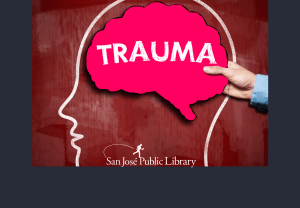
Black History Month is a time when we think about and celebrate the contributions and history of Black Americans in the United States and other areas of the larger African diaspora. Each year there is a theme to hone the focus of our celebrations and this year’s theme is Black/African Americans in the Arts. For the next 29 days we will focus on the contributions of Black people in visual and performing arts, literature, fashion, folklore, language, film, music, architecture, culinary arts and other forms of cultural expression.
Often when we talk about Black art we focus on art as a form of resistance, this is a very valid approach to how we view Black art and is the focus of another Black history blog. However, I wanted to focus on the lesser discussed element of Black art. How Black art is a form of resilience in the face of oppression, pain, and despair.
Black people experience mental health issues at the same rates and levels as other races of people. However Black Americans typically also encounter structural racism, institutionalized racism, individual racism, and oppression which has limited access to treatment and increases health risks, especially when it comes to brain/mental health. The are also barriers to care in the Black community, such as stigmatization of seeking care, a known lack of providers from culturally diverse backgrounds, the lack of cultural competency of providers that are available and issues with insurance. Additionally, there is mistrust in the medical health system that stims from decades of abusive practices.
In my own experience I have found that all of these barriers to be true. In college and shortly after many of my friends and I myself sought therapy. I sought therapy for the death of my mother and to discuss the trauma of Hurricane Katrina that happened a few months prior to her death. Often, we found ourselves all lumped into the same Black providers schedules to the point many of us made jokes about what topic we were all going to share next session and if our therapist would figure out, we were all talking about the same issue. When many of us shared with our families and friends we were in therapy many (me included) were asked why we didn't "seek ye first the kingdom" to address our feelings. Also, our access to care under our college plans/early job's insurance limited us to a handful of visits that as soon as we felt we were making progress our sessions were done.
This is commonplace so much so that often leaves many Black people, with limited options on how to address their feelings, and cope with mental health challenges. Many Black people and particularly Black women do utilize the church and prayer to combat mental health struggles like depression. Religion is a very valid place to begin addressing a mental health crisis. Nevertheless, this is often not enough to push back against the darkness that mental health struggles can cause.
While a lot of that sounds bleak there is light in that darkness.
For decades it has been proven that both viewing and creating art can have a large impact on mental health. Art has been known to boost serotonin, increase blood flow to the pleasure centers of the brain, reframe thinking and help with inspiring hope. Art builds emotional resilience and perhaps this is why art has always had a large role in the Black community. Art particularly has played a large role in healing in African communities which I think is a practice that not only should Black Americans seek out as a temporary alternative to the mental health care they may have difficulty finding but should considered by all of us no matter our racial backgrounds as an option.
As with all my blogs I leave you with a challenge:
Make something that expresses how you are feeling, or emotions you need to get out just like perhaps many of you tried during the early days of the pandemic.
Perhaps that is journaling and there are many ways to do that.
Perhaps that is fiber arts.
Perhaps that is painting that has been linked with better memory functions.
Don’t focus on trying to perfect the art or making something pleasing to other people. Like many Black artists focus on expression, authenticity and what your creative message is. As I had often said to adults who are revisiting art for the first time it is not about making duplicates of examples, making art that a gallery would want, or following a certain technique it's about making what feels good to you. Maybe as soon as you finish you toss it immediately in the trash, that’s ok. The goal is to create and feel. To unleash oneself on the creative project and find peace in that creation.
Perhaps you don't have time or energy to create then I suggest going to see Black art such as the exhibit that will be hosted at the Alum Rock branch this Black History Month. As it has been proven just viewing art can have a positive influence on one's mood. I think that is the reason many Black people have created and continue to create art, as it gives an opportunity to be authentically themselves and unleash the emotions that may be trapped inside.
I hope this Black History Month you take time to not only view but create your own art. If you have children encourage them to do the same as art therapy has been used for many years to help children express themselves. The key here is art is one of our best tools for emotional resilience and one that many members of the Black community have used for centuries to combat the struggles and pressures of Black life.
GO CREATE and FIND PEACE! Happy Black History Month.


Add a comment to: TIROC Black History Month: Art for Emotional Resilience